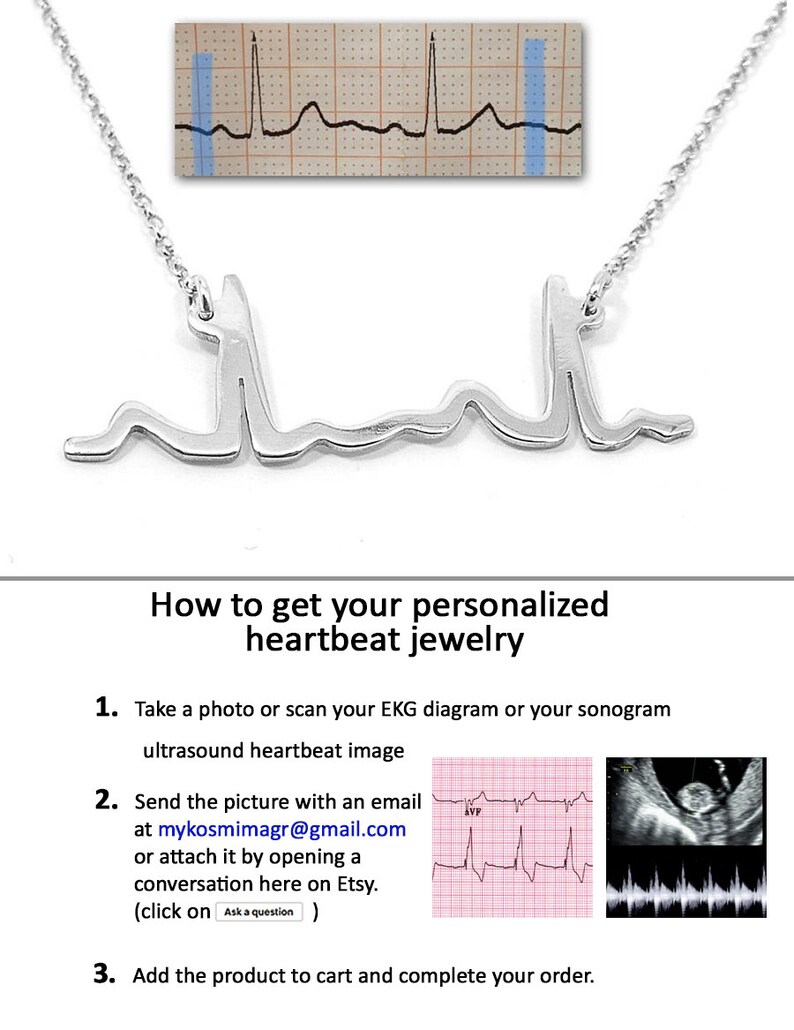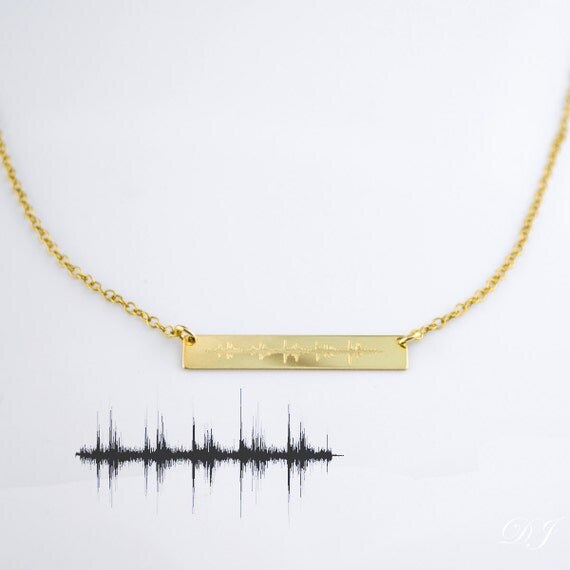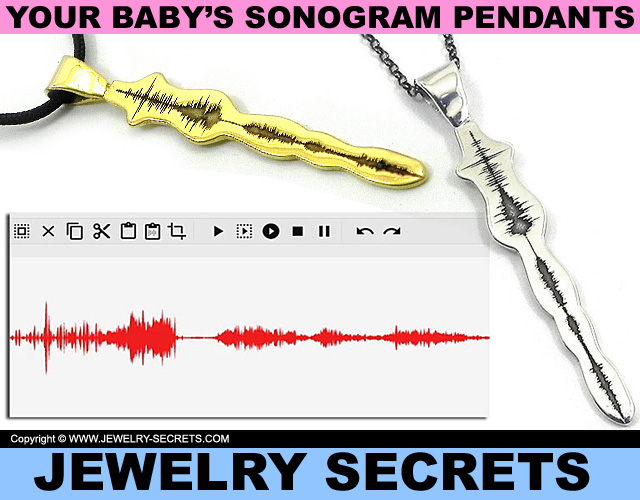

Healthline has strict sourcing guidelines and relies on peer-reviewed studies, academic research institutions, and medical associations. Occasionally, due to the baby’s position, finding out the sex may be difficult. The tech can often see the baby’s genitals clearly on the screen and make a pretty solid, educational guess.


You’ll likely be given the option to find out the sex and get some photos to hang on your refrigerator. The tech will also look at the body’s systems, the fluid levels around the baby, and the placenta.
Fetal heartbeat necklace series#
Your little one will have a series of measurements to ensure they are growing well. Many doctors perform an anatomy scan around this point in pregnancy to examine your baby’s features and inner workings from head to toe.ĭuring this noninvasive test, your technician will put gel on your tummy and use a probe to take photos of your baby. The most common time when couples find out the sex of their babies is between weeks 18 and 20. have a family history of a certain genetic disorder.had a chromosomal condition in another pregnancy.have received positive results from a cell-free DNA test.These tests do carry potential risks to the baby, so they aren’t usually recommended unless you: An amniocentesis is usually performed later, between weeks 14 and 20.īefore you sign on to find out your baby’s sex this way, pause for a moment.A CVS test is typically performed somewhere between weeks 10 and 13.These tests are more accurate than the cell-free blood tests, but also more invasive and carry some miscarriage risk. As a result, it can reveal the sex of your baby. These tests look for genetic abnormalities just like the cell-free DNA. Since Panorama is a screening test, the results regarding genetic abnormalities could be false positives or false negatives.Īny possible diagnosis you receive should be confirmed with further testing.Ī little later on in your pregnancy, your doctor may give you the option of having an amniocentesis or chorionic villi sampling (CVS). It’s important to note that this test is not recommended for women carrying multiples, using donor eggs, or those who have received a bone marrow transplant. Detecting the presence (or absence) of the Y chromosome ultimately reveals the sex. Your child’s sex chromosomes are among all that other genetic information.Ĭompared to similar screens (Verifi, MaternitT21, Harmony), Panorama claims a 100 percent accuracy rate with determining fetal sex. Instead, they screen for possible genetic abnormalities. The main goal of these tests is not to determine the sex of your child. You can get one as early as around week 9 in your pregnancy. Though heart rate measurements may not tell you if you should buy pink or blue nursery paint, there are plenty of other tests that can tell you your baby’s sex before you deliver.īlood tests called cell-free DNA tests have cropped up over the last several years. Here’s what the research says about heart rate and the sex of your baby. Some even shared that their boys actually had higher heart rates, while others shared that their girls had lower beats per minute. For example, on, most women reported that this myth did not work. Though many women swear heart rate clued them in, the overall results are mixed at best. Still, you can find lots of forum topics across the web on this subject. They continue to increase until they peak around week 9, between 140 and 170 bpm for boys and girls alike. The beats per minute (bpm) start at a slow 90 to 110 bpm and increase daily. You can even see and measure this flicker of light on an ultrasound. The truth is, your baby’s heart will likely start beating sometime around week 6 of your pregnancy. If it’s over 140 bpm, you’re having a baby girl. You may have heard that your baby’s heart rate can predict its sex as early as the first trimester. There are lots of old wives’ tales surrounding pregnancy. In fact, there seems to be little difference in the average beats per minute between males and females. doi:10.1249/ idea that a baby’s heart rate can predict this sex is a myth. Impact of maternal exercise during pregnancy on offspring chronic disease susceptibility. Avoid fetal "keepsake" images, heartbeat monitors.īlaize AN, Pearson KJ, Newcomer SC. What happens if my prenatal doctor hears a fetal heart arrhythmia? Management of fetal supraventricular tachycardia: three cases at a single institution. FIGO consensus guidelines on intrapartum fetal monitoring: Cardiotocography. Early fetal development.Īyres-de-Campos D, Spong C, Chandraharan E. Fetal heart rate monitoring during labor.Īmerican Pregnancy Association. The American College of Obstetrics and Gynecologists.


 0 kommentar(er)
0 kommentar(er)
